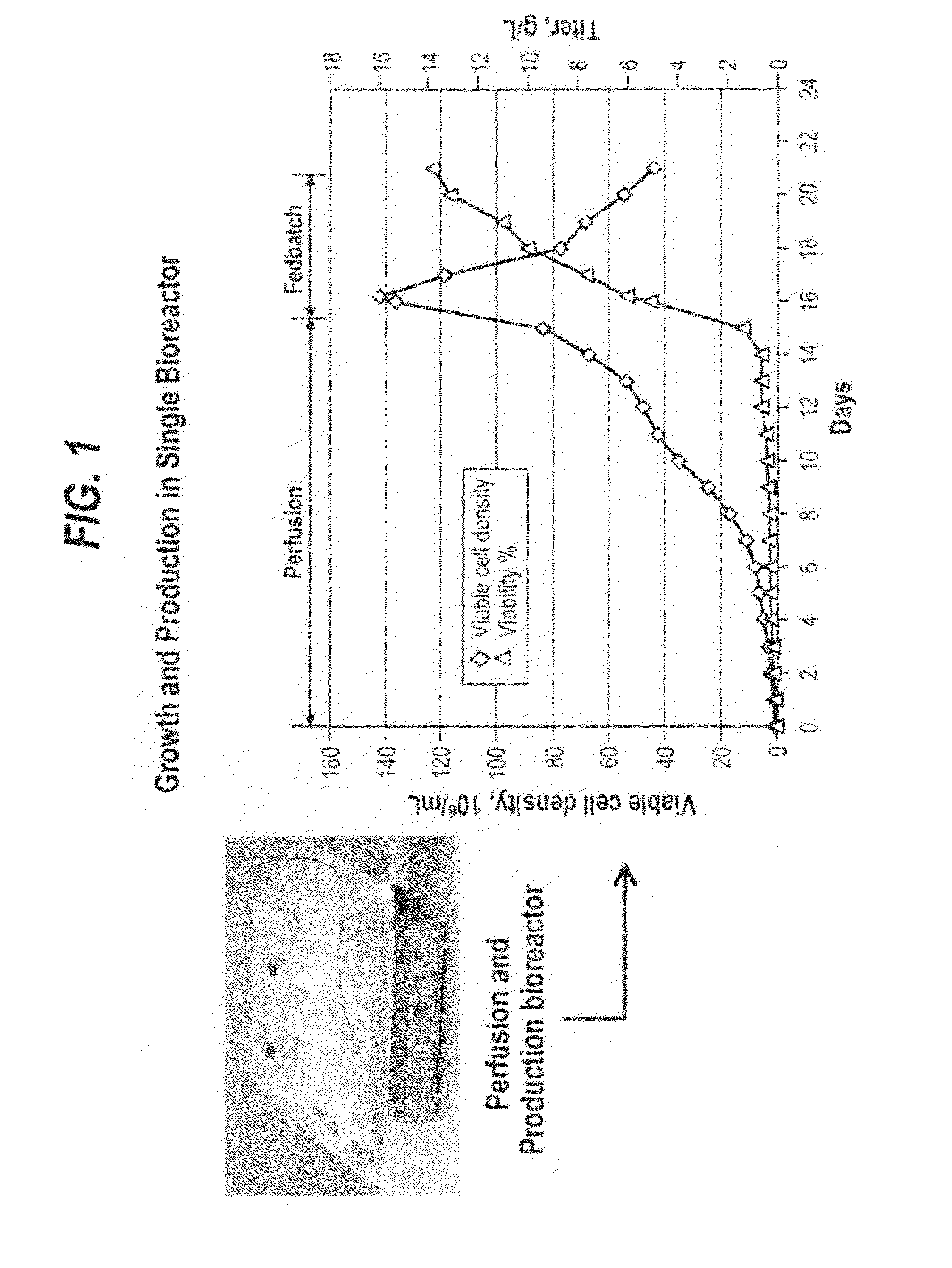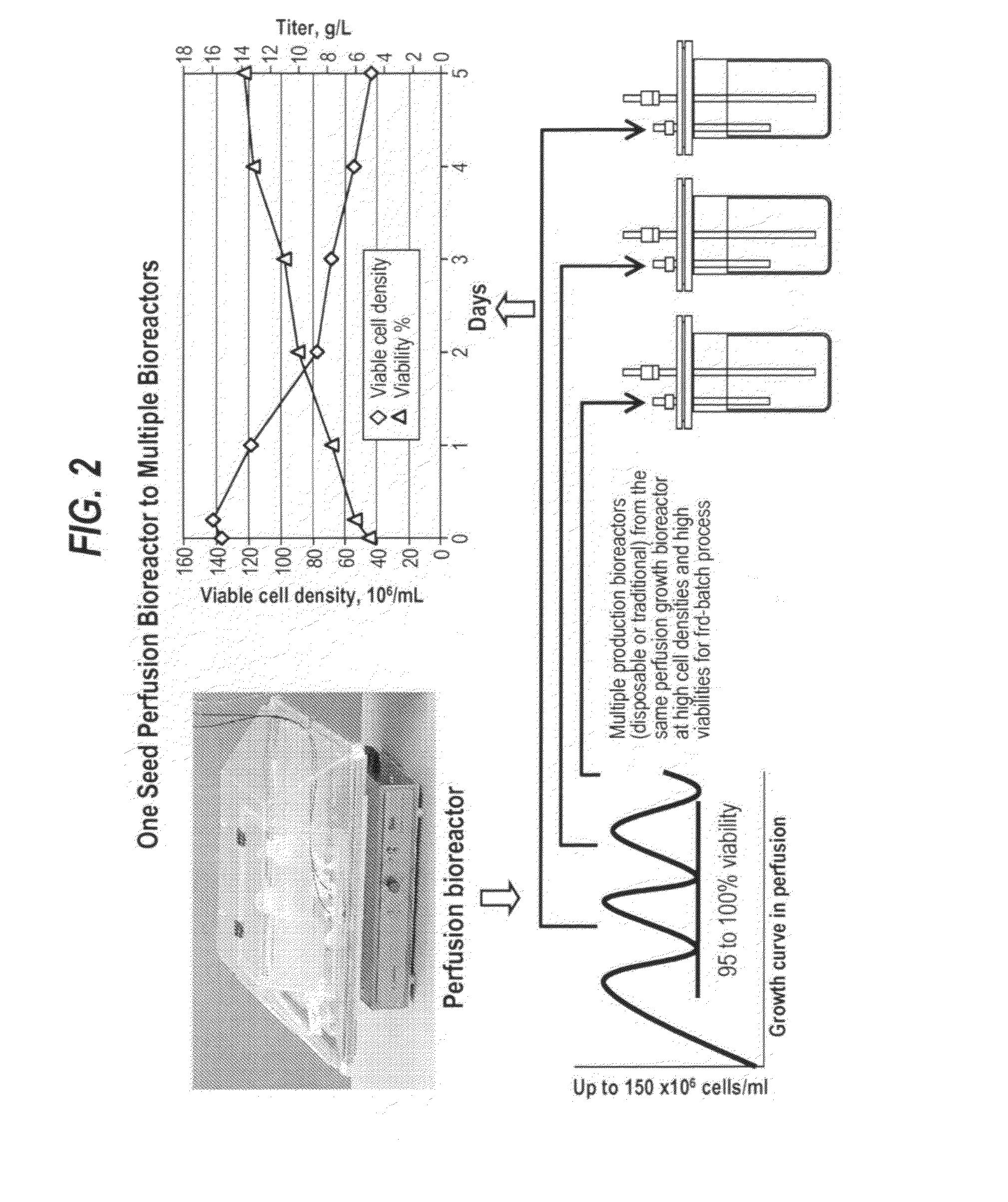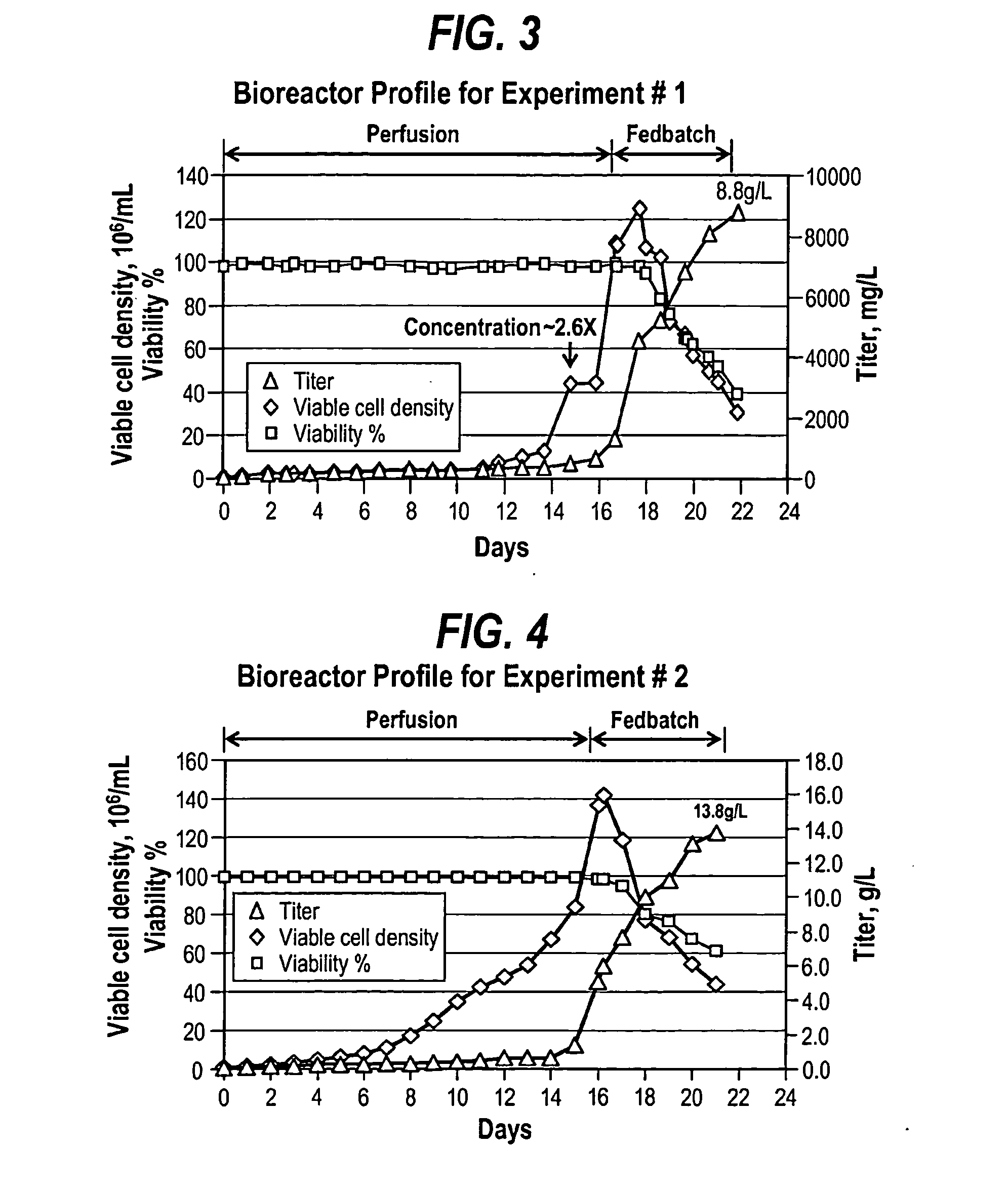Methods for enhanced protein production
a protein and cell culture technology, applied in the field of mammalian cell culture, can solve the problems of poor quality, more susceptible to degradation, limited cell density, etc., and achieve the effects of high cell density, shortening the time period, and increasing the quantity of protein
- Summary
- Abstract
- Description
- Claims
- Application Information
AI Technical Summary
Benefits of technology
Problems solved by technology
Method used
Image
Examples
example 1
Super Density Fed-Batch Cell Culture Process
[0090]Recombinant CHO cells (i.e., antibody producing CHOKlSV cells) were expanded in cell culture flasks before inoculating the Wave perfusion bioreactor. The perfusion bioreactor was operated with the same basal medium that is used in cell expansion process. The perfusion rate was adjusted to maintain a healthy culture with high cell viabilities. In certain experiments, cells were concentrated to a higher cell density, as appropriate, by adjusting the medium in and out flow rates. Once the viable cell density reached greater than 50×106 cells / mL, fed-batch production process was started. The culture was fed by a combination of bolus and continuous feeding modes, so as to control the osmolality and glucose level. The cell culture was then harvested when cell viability decreased to approximately 60-10%.
experiment 1
B. Experiment 1
[0091]Cells were inoculated in a BIOSTAT Cultibag (Sartorius) at approximately 0.84×106 cells / mL. The specific perfusion rate (SPR) ranged from 0.25 to 0.03×10−6 mL cell−1 day−1. Cells were concentrated about 2.6 fold when viable cell density reached 12.6×106 cells / mL. After concentration, cells were grown up to 108.8×106 cells / mL. Once the cells reached 108.8×106 cells / mL, perfusion was stopped and the fed-batch process was started immediately. During the fed-batch process, one or two bolus feeds at 3 to 10% (i.e., percentage of feed to post feed volume) were performed every day to maintain cell viability. Glucose was also supplemented by bolus feed to maintain a sufficient level. Cell density reached 124.66×106 cells / mL with 98% viability the second day after fed-batch process started. The total feed percentage was about 40%. As shown in the growth and production profile depicted in FIG. 3, a final productivity of 8.8 g / L from fed-batch process was achieved after 6 ...
experiment 2
C. Experiment 2
[0092]Cells were inoculated in the WAVE BIOREACTOR® (GE Healthcare, Fairfield, Conn.) at approximately 0.81×106 cells / mL. The rate of specific perfusion (SPR) ranged from 0.07 to 0.01×10−6mL cell−1 day−1 and varied at different time points. The cells were concentrated about 1.5 fold overnight between days 15 and 16. On day 16, the cell density reached up to 136.5×106 cells / mL. At this point in time, the perfusion process was stopped and the fed-batch process was started. One or two bolus feeds at 1 to 6% were performed in the first two days to maintain cell viability. Continuous feeding of glucose and / or other nutrients was started on the first day of the fed-batch process to maintain glucose level, as well as to promote a favorable osmolality increasing trend, while providing sufficient nutrients.
[0093]The cells grew to 142.0×106 cells / mL about 7 hours after fed-batch process started and the total feed percentage was about 28%. As shown in the growth and production p...
PUM
| Property | Measurement | Unit |
|---|---|---|
| concentration | aaaaa | aaaaa |
| density | aaaaa | aaaaa |
| pH | aaaaa | aaaaa |
Abstract
Description
Claims
Application Information
 Login to View More
Login to View More - R&D
- Intellectual Property
- Life Sciences
- Materials
- Tech Scout
- Unparalleled Data Quality
- Higher Quality Content
- 60% Fewer Hallucinations
Browse by: Latest US Patents, China's latest patents, Technical Efficacy Thesaurus, Application Domain, Technology Topic, Popular Technical Reports.
© 2025 PatSnap. All rights reserved.Legal|Privacy policy|Modern Slavery Act Transparency Statement|Sitemap|About US| Contact US: help@patsnap.com



